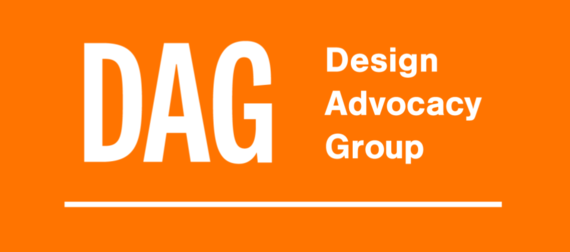For the last 12 months this space has been filled with the thoughts, observations, critiques and rantings of members of the Design Advocacy Group. DAG is a volunteer collection of architects, planners, designers, preservationists and even the odd historian like myself who want to promote good design principles and practice in the city.
Design in the built environment is inescapable. Every space you experience in the course of your day has been designed somehow -- from the buildings you live and work in, to the streets you drive and walk down, to the parks you sit in. Good urban design has the ability to thrill and inspire us, and it can contribute to what makes the city alive. Conversely, bad design can make us feel mean, aggravated and depressed and can kill off urban vitality.
In this sense, we believe that design matters deeply to the future health of the city. Good design isn't a luxury, reserved only for high-profile building projects or wealthy neighborhoods. Every Philadelphian has a right to live and work in spaces that are well designed and this great city deserves nothing less.
DAG formed, however, out of a growing concern that good urban-design principles were being ignored too often as developers and their lawyers rushed to close development deals, encouraged by city officials who seem convinced that any project, no matter how poorly planned, badly sited or inhumanely designed, must be a good project. Bad design might pay some short-term dividends, but in the long term -- and we should always think about how our decisions will affect the long term -- bad design winds up costing the city far more.
In May, DAG hosted a very lively discussion of some of the critical design issues facing the city. Attended by 150 people and held in Carpenter's Hall, DAG's "Pride of Place" forum demonstrated, if it really needed demonstrating in the first place, just how passionately Philadelphians feel about their city and how much they want good design principles to shape its future.
Based on the success of that event, DAG is hosting "Pride of Place II" on Friday, Sept. 19 at 5:30 p.m. in the Stearn's Auditorium at the Franklin Institute.
This event will offer the two mayoral candidates an opportunity to respond to some of what we feel are the most pressing urban-design questions any new administration will face. As of this writing, both Mayor John Street and Sam Katz have been invited. Katz has already agreed to attend.
The discussion will focus on three large topics:
First, we will consider the processes that shape our city, including the various agencies, commissions and bureaucracies responsible for overseeing how the city will be developed. We want to consider questions like: Why does the Zoning Board of Adjustment so regularly overturn the Philadelphia Zoning Code by granting variances? Is there something wrong with the code? Is there something wrong with the way the ZBA interprets and enforces it? How can we equip our Historical Commission with the staff and powers it needs to protect our architectural treasures? In other cities, a planning commission has the statutory responsibility to review and approve such important work; would that be a good idea for Philadelphia?
Next, we want to discuss how to rebuild the 21st-century city. For example, DAG doesn't think that large parking garages should interrupt the major shopping streets of Center City. How can we protect the appropriate relationship between our walkable city and the need to maintain vehicle access and parking? Likewise, many of our neighborhoods are still scarred by the large-scale demolition and unskillful reconstruction that characterized the urban renewal efforts of the 1950s and '60s. How can the Neighborhood Transformation Initiative avoid making these same mistakes?
Finally, we will examine the candidates' plans to reinvigorate William Penn's vision of Philadelphia as a "greene countrie town." We want to know how the next mayor will guarantee that the development of Penn's Landing will preserve public access to the river and create generous public space at the river's edge.
In addition, we have noticed that in most American cities, the neighborhoods that border the parks are among the most desirable places to live and work; the parks are anchors for private investment and population stability. Just the opposite seems to be the case in many parts of Philadelphia. With a public discussion of the transformation of Fairmount Park just beginning, what are the most important questions that it should address?
More than anything else, DAG is committed to the notion that the public should have a voice in shaping how decisions about our shared built environment will look, feel, and function. The "Pride of Place II" is an opportunity for you to contribute to that conversation. We look forward to seeing you there.


